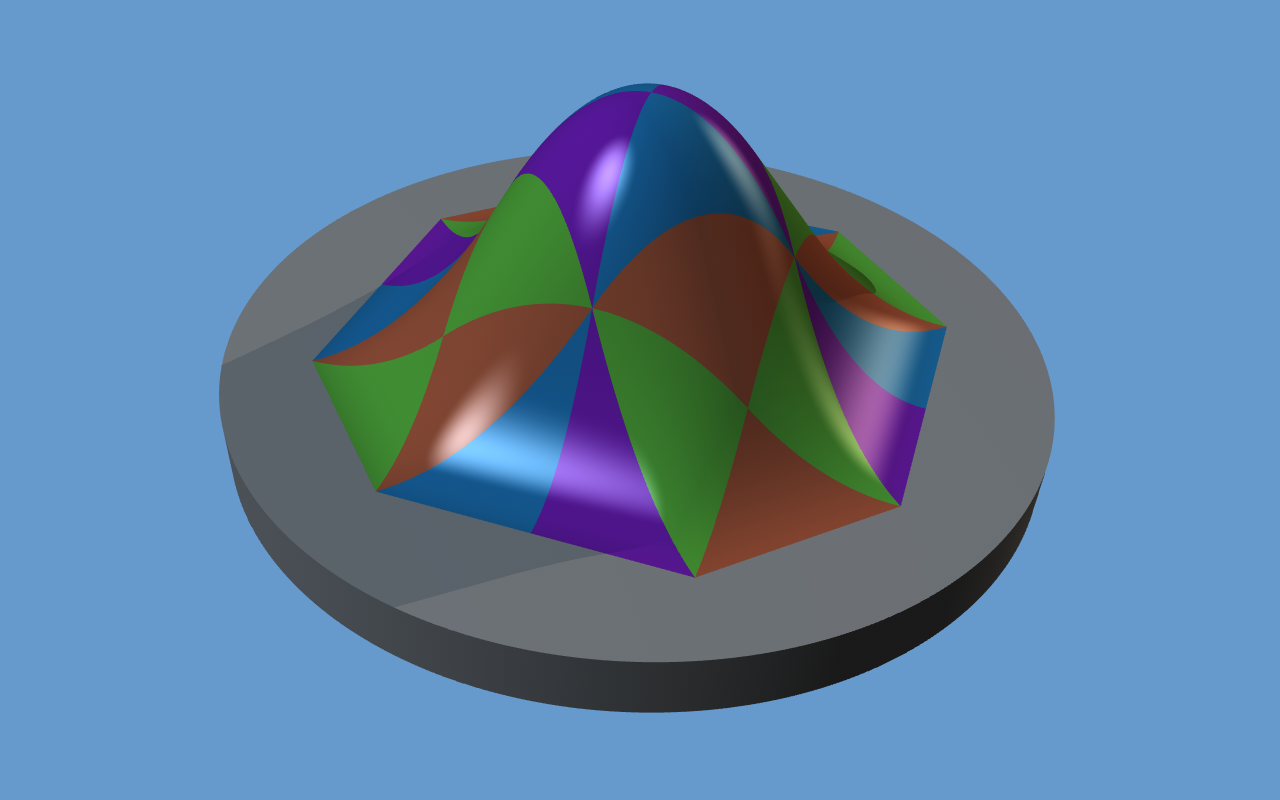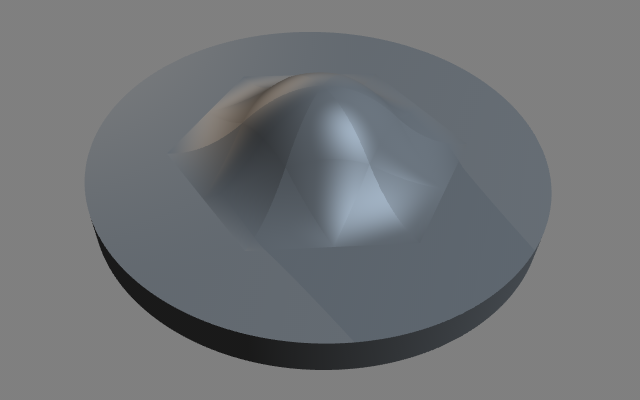
Nothing breathtaking here, just exploring CSG with quadrics, and piece-wise quadrics in general. Newer pictures first, older ones below.
A flawed torus, pieced together from quadric patches (no bonus points if you
can spot the obvious bugs and flaws):

The patches forming the Zwart-Powell element are organized as a grid of
squares, where each square is cut along its two diagonals. So a height field over
a cartesian lattice takes four quadric patches per square cell. In isolation,
this single basis function requires fewer quadric patches. Adjacent blue-ish
patches are all part of a single quadric, and there are no real edges between
them:

An actual basis function of a 2D spline. In contrast to the wannabe further
below, this one is tangent continuous everywhere. It is a box spline based on the
vectors (1,0) (0,1) (1,1) (-1,1), also known as the Zwart-Powell element (28
quadric domains in general, more primitives for rendering):

This spline is not separable, but it can be decomposed into smaller copies of
itself. Does this mean that it is a Wavelet?
A surface of revolution:

Some stem or stalk made from slightly perturbed hyperboloids:

A wannabe basis function for a 2D spline. This might be useful for building
somewhat smooth height fields of quadric patches. Unfortunately, most
degrees of freedom are constrained by symmetry, partition of unity, compact
support, and the prevention of overshooting (24 quadric domains, many more
primitives for this test image):

A chain. Each link is the intersection of three quadrics:

"Modern Art" made from 50 quadrics:
